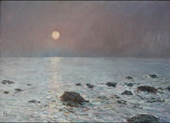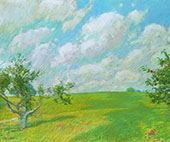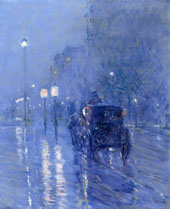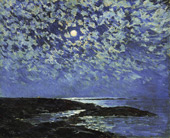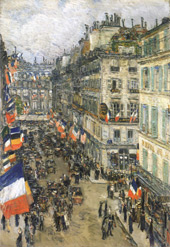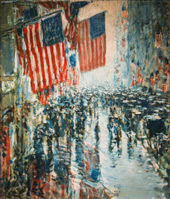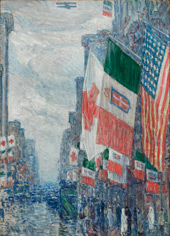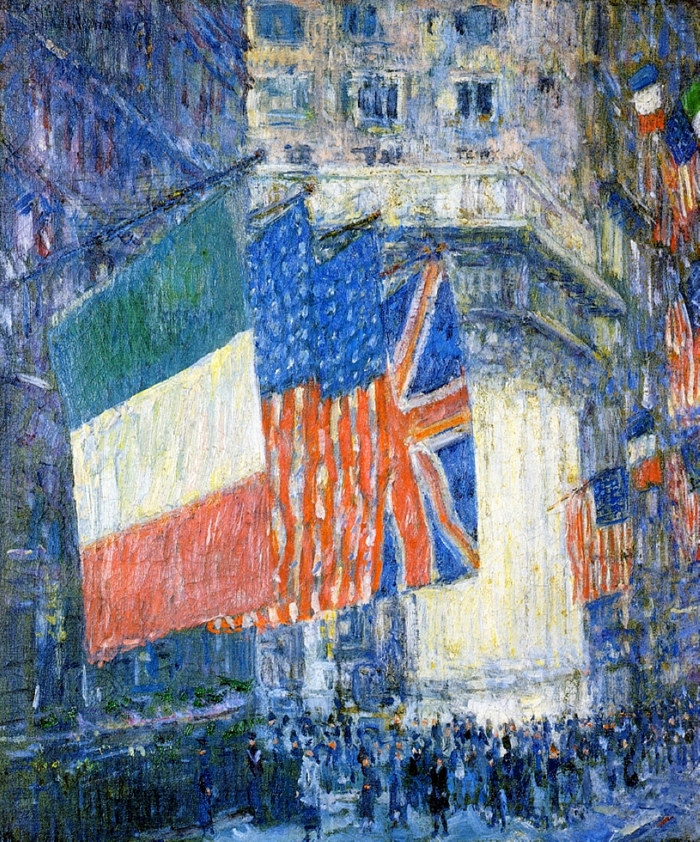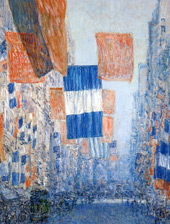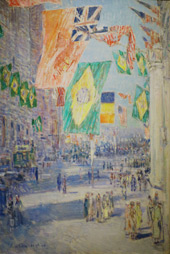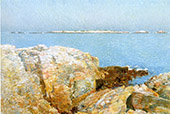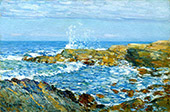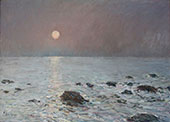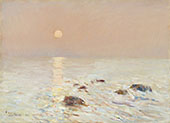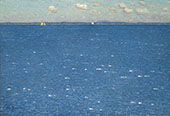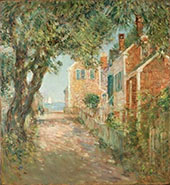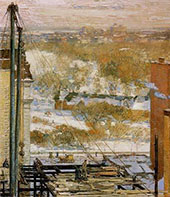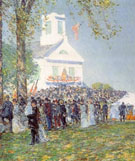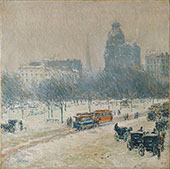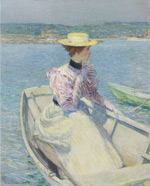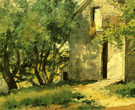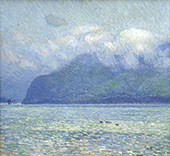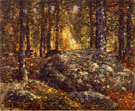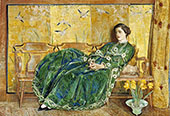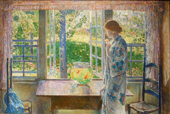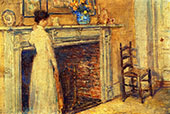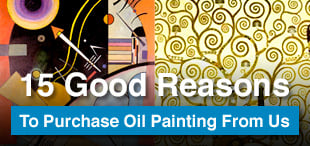Childe Hassam Oil Painting Reproductions
Childe Hassam replica paintings on Canvas for sale
Childe Hassam, American Impressionist
Childe Hassam was a pioneering American Impressionist artist who brought French Impressionism to the USA. Famous artists like John Henry Twachtman, William Merritt Chase, and Mary Cassatt changed the course of American art.
Who is Frederick Childe Hassam?
Childe Hassam was born in 1859 and grew up in the historic Dorchester neighborhood of Boston. The family lived on Olney Street, Meeting House Hill. Hassam’s father, Frederick Fitch Hassam, was reasonably successful. Hassam’s mother, Rosa Delia Hawthorne, shares ancestry with the famed American novelist Nathaniel Hawthorne. Due to his dark skin tone, many of Hassam's peers joked that he was of Middle Eastern descent. He enjoyed these rumors and played on them throughout his life. From the mid-1880s onwards, Hassam painted an Islamic crescent moon next to his signature. He also took the nickname “Muley,” derived from the Arabic Mawla meaning 'master.'
A major fire swept through Boston in November 1872, destroying his father’s business. Childe Hassam immediately left school to support his family. He secured a job with Little Brown & Company and studied wood engraving. Under the tutelage of the respected engraver George Johnson, he honed his skills and created many commercial newspaper engravings. Hassam also started painting properly around this time. Continuing trends from his school days, he produced watercolor artworks of outdoor scenes.
Childe Hassam Impressionist Paintings
He proved his artistic talents early and produced watercolor paintings at school. From 1879 onwards, Childe Hassam created his first oil paintings. Famous Impressionist paintings are:
- Avenue in the Rain 1917 is a Childe Hassam flag. It belongs to the White House Permanent Art Collection and five other Hassam paintings. It is one of our famous paintings and is instantly recognizable by every American.
- Allies Day, May 1917. Hassam's flag painting is displayed at The National Gallery of Art, New York.
- The Fourth of July 1916. An American flag painting that celebrates Independence Day. An oil painting owned by the New York Historical Society
- Celia Thaxter's Garden on the Isle of Shoals. Hassam was friends with the poet Celia Baxter and spent many Summer vacations near her home on Appledore Island, off the coast of Maine.
- Poppies Isle of Shoals 1891.
- Evening in New York, also known as Rainy Midnight. Painted around 1890, it is part of The Museum of Fine Arts collection in Houston
Where did Childe Hassam work?
Childe Hassam worked across America and France. In 1882, he worked as a freelance illustrator in Boston. Hassam supplied illustrations for Harper’s Weekly and Scribner’s Monthly and attended drawing classes at the Boston Art Club and the Lowell Institute. Hassam launched his first exhibition at the Everett Gallery in Boston in 1883. He also dropped his first name Frederick during this time. In the summer of 1883, along with Edmund Garrett, Hassam embarked on a study trip to Europe. Traveling through the UK, France, Netherlands, Italy, Spain, and Switzerland, the two men studied Old Master paintings and countryside scenes. Hassam found J M W Turner’s paintings awe-inspiring. During this trip, he worked on hundreds of watercolors, showing them back in Boston in 1884.
Who inspired Childe Hassam?
As well as JMW Turner paintings, Hassam found William Morris Hunt particularly inspiring. He loved Hunt’s approach to painting purely from nature. Hassam also respected contemporary French landscape paintings, especially how they combined Impressionist en Plein air styles with traditional Neo-Classicism. The famed French landscape painter Jean-Baptiste Camille Corot was particularly inspirational. Hassam married Kathleen Maude, a family friend, in 1884 and started painting cityscape paintings. Impressionist paintings such as Boston Common at Twilight and Rainy Day Columbus Avenue represent this shift to urban subjects. In these oil paintings, Hassam abandoned Corot's traditional, classical landscapes. Instead, Hassam moved towards Jean Leon Gerome.
Childe Hassam in Paris
Hassam continued Gerome’s revolutionary everyday approach in Boston before returning to Paris in 1886. He rented an apartment and studio in the center of Paris. The pair socialized in Parisian artistic circles, and Hassam studied at the prestigious Academie Julian. Finding the strict teaching 'the personification of routine' and claiming it 'crushes all originality,' Hassam soon left. Shortly after, he painted Parisian scenes, including two well-known versions of the oil painting Grand Prix Day 1887. Still inspired by his French Impressionist counterparts, Childe Hassam's now famous paintings revolutionized American Impressionism.
Discover Childe Hassam paintings for sale. Impressionist paintings are some of the most popular oil painting reproductions.
Our online catalog of painting reproductions offers 30,000+ famous paintings for sale. Replica art is available in many sizes, and all paintings are covered by a 100% Money Back or Replacement guarantee.
Testimonial from Dr Adam H, San Bernardino, CA
Cannot Find What You Are Looking For?
Reproduction Gallery Information
Customer Service
(Send Us A Message)
Tel: (503) 937 2010
Fax: (503) 937 2011


